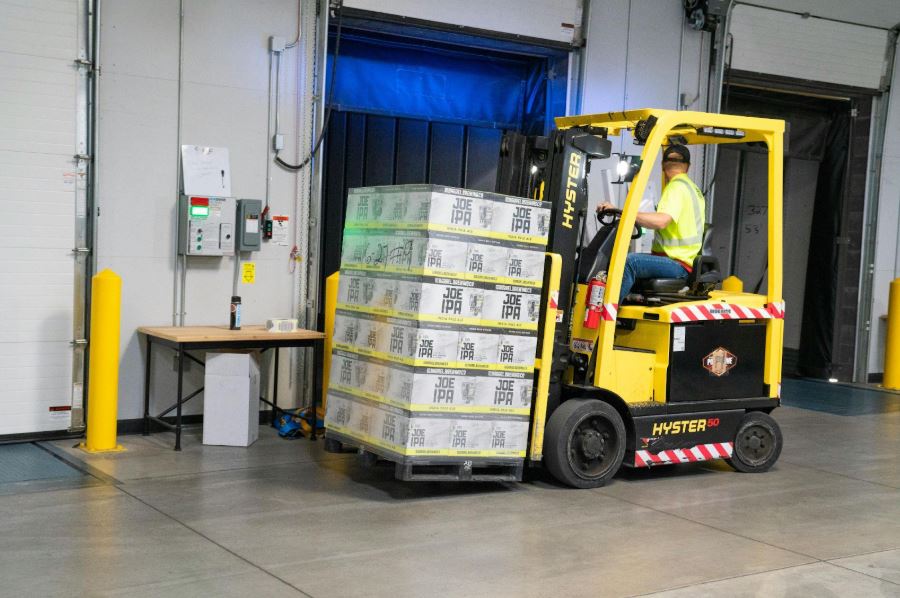Uncover the overlooked factors that boost Material Handling Efficiency beyond machinery, optimize flow, reduce delays, cut costs.
Most people think material handling comes down to equipment, forklifts, conveyors, pallet jacks, and cranes. And sure, those tools are important. But equipment alone doesn’t tell you much about how efficiently a warehouse runs.
What really matters is how the work gets done. The way materials move, how people handle them, and whether the systems in place actually support the flow, all of that often makes a bigger impact than the machines themselves. A new forklift might look like an improvement, but it won’t solve delays from missing parts, a messy layout, or rushed operators. Those problems can cancel out any gains.
This article looks at the smaller things most people ignore. They may seem minor, but fixing them can make a big difference. If you want to cut costs, reduce delays, and avoid avoidable problems, these are the details that count.
Reliable Parts and Support Keep Things Moving
One of the biggest issues in material handling isn’t just when equipment breaks, it’s the downtime that follows. Machines like forklifts often sit idle while someone scrambles to identify the needed part, locate it, and estimate delivery time. Meanwhile, tasks back up, schedules shift, and productivity suffers.
These machines frequently require replacement parts such as tires, batteries, joystick controllers, filter kits, lights, and other components prone to wear and tear. Without a reliable source in place, even small issues can result in costly delays.
Fortunately, there are online suppliers that specialize in aftermarket components for leading equipment brands. These platforms offer everything from joystick controllers to enduro tires and provide fast shipping, extensive product manuals, and responsive support, ensuring operations don’t miss a beat.
If you’re trying to avoid downtime the next time something breaks, Intella offers replacement parts for forklifts, visit IntellaParts.com to learn more. It offers a wide selection of replacement parts for multiple brands and equipment types, helping your team stay focused and your workflow on track.
Operator Training and Familiarity
Operators play a massive role in day-to-day material handling, yet their impact is often underappreciated. Well-trained operators don’t just handle equipment better, they reduce wear and tear, avoid accidents, and save time by knowing how to load, stack, and move goods properly.
But the key here isn’t just initial training. It’s continuous learning. Equipment gets updated, warehouse layouts change, and product types evolve. When teams don’t stay up to speed, inefficiencies creep in. A single poor stacking habit or shortcut on safety can cost more in damage or downtime than most managers realize.
Companies that build a culture of operational learning tend to outperform those that treat training as a one-and-done event.
Warehouse Layout and Flow
The physical setup of your warehouse directly impacts how smoothly goods are handled. This might sound obvious, but you’d be surprised how many facilities run into bottlenecks because of a poor floor plan.
Think of it like traffic planning. If too many tasks converge in one area, say, receiving, inspection, and restocking, then delays are inevitable. Similarly, long travel distances between loading docks and storage areas eat into time and fuel.
A well-organized warehouse uses clear, logical routes for high-volume movements. Fast-moving items should be closer to the loading docks. Pathways should be wide enough to prevent congestion. And every storage zone should be easy to access with the appropriate equipment.
Periodic reviews of layout can uncover surprisingly simple changes that boost efficiency without spending a cent on new gear.
Communication Between Departments
Material handling is often at the mercy of upstream and downstream departments. Poor communication between purchasing, operations, and shipping can lead to surprises like unexpected rush jobs, delayed materials, or understaffed shifts.
If the warehouse isn’t informed about incoming goods or last-minute order changes, it’s nearly impossible to operate efficiently. A robust system of cross-department communication, whether through software, shared dashboards, or regular briefings, can drastically improve coordination.
Simple changes like confirming daily inbound volumes or aligning on outbound cut-off times help everyone prepare, rather than react.
Equipment Maintenance Culture
Scheduled maintenance is easy to overlook when things are running fine. But it’s that very mindset that often leads to surprise breakdowns at the worst possible time.
Preventive maintenance should be baked into the culture, not treated like a chore. When operators and maintenance teams track usage hours, monitor warning signs, and keep a clear maintenance log, they catch small issues before they balloon into big ones.
Facilities that embrace a “care before repair” mindset enjoy longer equipment life and fewer workflow interruptions.
Data Collection and Analysis
You can’t improve what you don’t measure. Yet many material handling systems still run without meaningful data tracking. Basic metrics like equipment usage, travel time, and pick/pack rates provide invaluable insights, but only if someone’s paying attention.
By analyzing this data, managers can spot patterns, such as specific time windows when productivity drops or equipment that’s consistently slowing down operations. It’s not about overcomplicating things with endless reports. It’s about asking the right questions and using data to back up your hunches.
Even small fixes, like adjusting shift schedules or relocating high-volume SKUs, often start with a single insight from tracking data.
Seasonal Readiness and Flexibility
Some operations change very little year-round. Others swing dramatically with seasons, sales, or external events. In those cases, flexibility is key to staying efficient.
Too often, facilities fail to plan ahead for seasonal peaks. This leads to rushed training, rented equipment shortages, and staff burnout. Smart operations take the time to review last year’s data, anticipate volume changes, and plan accordingly.
That could mean ramping up part inventory, cross-training staff, or temporarily reconfiguring the warehouse. Being flexible doesn’t mean scrambling. It means preparing to adapt with intention.
Material handling efficiency isn’t just about speed or having the most advanced gear. It’s about looking at the full picture, including the less obvious factors that influence how well people and machines can move goods.
From choosing a reliable parts supplier to designing smarter layouts and investing in operator training, small shifts can make a big impact. When companies take the time to address these overlooked areas, they’re often rewarded with smoother workflows, fewer disruptions, and a stronger bottom line.
Because in the end, it’s not just what you move, it’s how you move it that matters.



